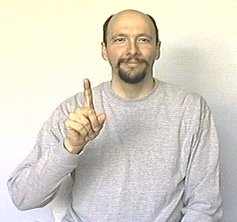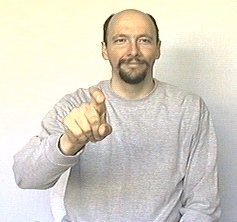American Sign Language: "Question
Marks"
Daniel Hodson writes:
Hi Dr. Bill. On some other ASL-related sites, students are instructed to use the
ASK-to sign at the end of any question, as a "I'm asking for a response"
indicator. I've never seen you do this. Is it necessary? It seems redundant to
use a "wh"-question word and also have to signal that you're asking a question.
Thanks.
- Daniel
------------------------------
You are right. Adding a manual signal (such as a QM-wig) to the end of a sentence that already uses facial grammar (such as raised or lowered eyebrows) to indicate that you are asking a question -- is redundant.
QM-wig should be used sparingly and only for situations when you wish to either clarify that a complex sentence is indeed a question and/or you want to add an element of skepticism (via a combination of the QM-wig sign and a disbelieving facial expression).
See: https://www.youtube.com/watch?v=WIfbve2UfKM
Think of QM-wig as similar to the question phrase "Is that so?" Then think of all the ways you could modulate "Is that so?"--by changing your facial expressions and tone of voice. Thus you can see that QM-wig can have a range of meanings. It should not be used at the end of every question.
Dr. V
p.s. There is a difference between "ASK-to" and "QM-wig" (question-mark wiggle).
ASK-to:
Start with an index-finger handshape, move your hand toward the person being asked, and change your handshape into an "X"-hand (pointed toward that person at a loose angle).



Notes:
See: QM-wig
See: ASK-to
*
Want to help support ASL University? It's easy:
DONATE (Thanks!)
* Another way to help is to buy something from Dr. Bill's "Bookstore."
* Want even more ASL resources? Visit the "ASL Training Center!" (Subscription
Extension of ASLU)
* Also check out Dr. Bill's channel:
www.youtube.com/billvicars
You can learn American Sign Language (ASL) online at American Sign Language University ™
ASL resources by Lifeprint.com © Dr. William Vicars